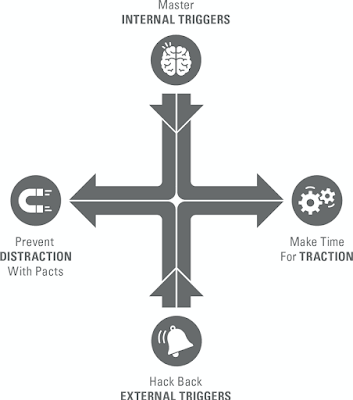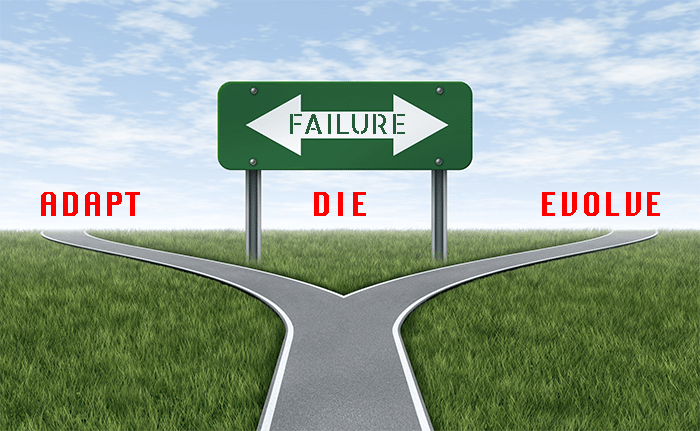
and previous book from the same author
excellent interview with book author:

the solution and opposite for "dis-traction" (unplanned action) is "traction" (planned action)!
"time management" is "pain (discomfort) management"
"in-distract-able" is the superpower to have!
Nir Eyal Official Site: Articles, Videos, and Newsletter
NIR EYAL - INDISTRACTABLE: How To Control Your Attention And Choose Your Life -Part1/2 | London Real - YouTube
What makes some technology so habit-forming? | Nir Eyal | TED Institute - YouTube
online book on archive.org
Indistractable : NIR EYAL : Free Download, Borrow, and Streaming : Internet Archive
Nir Eyal - Wikipedia
"Nir Eyal is an Israeli-born American author, lecturer and investor known for his bestselling book, Hooked: How to Build Habit-Forming Products
After graduating from the Master of Business Administration program at Stanford in 2008,[6] Eyal and fellow students founded a company that placed online ads in Facebook, with Eyal serving as CEO.[4] His work in the company sparked his interest in the psychology of users, and he went on to become a consultant in product design.[4] In 2012, he taught a course in the program on product design at the Stanford University School of Engineering."
summaries:
INDISTRACTABLE by Nir Eyal | Core Message - YouTubeHOOKED by Nir Eyal | Core Message - YouTubeby
Productivity GameIndistractable: Chapter Takeaways
INTRODUCTION
Chapter 1: Living the life you want requires not only doing the right things
but also avoiding doing the wrong things.
Chapter 2: Traction moves you toward what you really want while distraction moves you further away. Being indistractable means striving to do what you say you will do.
PART 1: MASTER INTERNAL TRIGGERS
Chapter 3: Motivation is a desire to escape discomfort.
Find the root causes of distraction rather than proximate ones.
Chapter 4: Learn to deal with discomfort rather than attempting to escape it with distraction.
Chapter 5: Stop trying to actively suppress urges—this only makes them stronger.
Instead, observe and allow them to dissolve.
Chapter 6: Reimagine the internal trigger. Look for the negative emotion preceding the distraction, write it down, and pay attention to the negative sensation with curiosity rather than contempt.
Chapter 7: Reimagine the task. Turn it into play by paying “foolish, even absurd” attention to it. Deliberately look for novelty.
Chapter 8: Reimagine your temperament. Self-talk matters. Your willpower runs out only if you believe it does. Avoid labeling yourself as “easily distracted” or having an “addictive personality.”
PART 2: MAKE TIME FOR TRACTION
Chapter 9: Turn your values into time. Timebox your day by creating a schedule template.
Chapter 10: Schedule time for yourself. Plan the inputs and the outcome will follow.
Chapter 11: Schedule time for important relationships. Include household responsibilities as well as time for people you love. Put regular time on your schedule for friends.
Chapter 12: Sync your schedule with stakeholders.
PART 3: HACK BACK EXTERNAL TRIGGERS
Chapter 13: Of each external trigger, ask: “Is this trigger serving me, or am I serving it?” Does it lead to traction or distraction?
Chapter 14: Defend your focus. Signal when you do not want to be interrupted.
Chapter 15: To get fewer emails, send fewer emails. When you check email, tag each message with when it needs a reply and respond at a scheduled time.
Chapter 16: When it comes to group chat, get in and out at scheduled times. Only involve who is necessary and don’t use it to think out loud.
Chapter 17: Make it harder to call meetings. No agenda, no meeting. Meetings are for consensus building rather than problem solving. Leave devices outside the conference room except for one laptop.
Chapter 18: Use distracting apps on your desktop rather than your phone. Organize apps and manage notifications. Turn on “Do Not Disturb.”
Chapter 19: Turn off desktop notifications. Remove potential distractions from your workspace.
Chapter 20: Save online articles in Pocket to read or listen to at a scheduled time. Use “multichannel multitasking.”
Chapter 21: Use browser extensions that give you the benefits of social media without all the distractions. Links to other tools are at: NirAndFar.com/Indistractable.
PART 4: PREVENT DISTRACTION WITH PACTS
Chapter 22: The antidote to impulsiveness is forethought. Plan ahead for when you’re likely to get distracted.
Chapter 23: Use effort pacts to make unwanted behaviors more difficult.
Chapter 24: Use a price pact to make getting distracted expensive.
Chapter 25: Use identity pacts as a precommitment to a self-image. Call yourself “indistractable.”
PART 5: HOW TO MAKE YOUR WORKPLACE INDISTRACTABLE
Chapter 26: An “always on” culture drives people crazy.
Chapter 27: Tech overuse at work is a symptom of dysfunctional company culture. The root cause is a culture lacking “psychological safety.”
Chapter 28: To create a culture that values doing focused work, start small and find ways to facilitate an open dialogue among colleagues about the problem.
PART 6: HOW TO RAISE INDISTRACTABLE CHILDREN (AND WHY WE ALL NEED PSYCHOLOGICAL NUTRIENTS)
Chapter 29: Find the root causes of why children get distracted. Teach them the four-part indistractable model.
Chapter 30: Make sure children’s psychological needs are met. All people need to feel a sense of autonomy, competence, and relatedness. If kids don’t get their needs met in the real world, they look to fulfill them online.
Chapter 31: Teach children to timebox their schedule. Let them make time for activities they enjoy, including time online.
Chapter 32: Work with your children to remove unhelpful external triggers. Make sure they know how to turn off distracting triggers, and don’t become a distracting external trigger yourself.
Chapter 33: Help your kids make pacts and make sure they know managing distraction is their responsibility. Teach them that distraction is a solvable problem and that becoming indistractable is a lifelong skill.
PART 7: HOW TO HAVE INDISTRACTABLE RELATIONSHIPS
Chapter 34: When someone uses a device in a social setting, ask, “I see you’re on your phone. Is everything OK?”
Chapter 35: Remove devices from your bedroom and have the internet automatically turn off at a specific time.
 "Whether you want to write about people or places, science and technology, business, sports, the arts or about yourself in the increasingly popular memoir genre, On Writing Well offers you fundamental priciples as well as the insights of a distinguished writer and teacher. With more than a million copies sold, this volume has stood the test of time and remains a valuable resource for writers and would-be writers."
"Whether you want to write about people or places, science and technology, business, sports, the arts or about yourself in the increasingly popular memoir genre, On Writing Well offers you fundamental priciples as well as the insights of a distinguished writer and teacher. With more than a million copies sold, this volume has stood the test of time and remains a valuable resource for writers and would-be writers."



